The potential of natural products to inhibit abnormal aggregation of α-Synuclein in the treatment of Parkinson's disease
- PMID: 39508052
- PMCID: PMC11537895
- DOI: 10.3389/fphar.2024.1468850
The potential of natural products to inhibit abnormal aggregation of α-Synuclein in the treatment of Parkinson's disease
Abstract
Parkinson's disease (PD), as a refractory neurological disorder with complex etiology, currently lacks effective therapeutic agents. Natural products (NPs), derived from plants, animals, or microbes, have shown promising effects in PD models through their antioxidative and anti-inflammatory properties, as well as the enhancement of mitochondrial homeostasis and autophagy. The misfolding and deposition of α-Synuclein (α-Syn), due to abnormal overproduction and impaired clearance, being central to the death of dopamine (DA) neurons. Thus, inhibiting α-Syn misfolding and aggregation has become a critical focus in PD discovery. This review highlights NPs that can reduce α-Syn aggregation by preventing its overproduction and misfolding, emphasizing their potential as novel drugs or adjunctive therapies for PD treatment, thereby providing further insights for clinical translation.
Keywords: Parkinson’s disease; aggregation; misfolding; natural products; α-Synuclein.
Copyright © 2024 Yang, Lv, Zhao, Lai, Zheng, Qi, Zhao, Hu, Chen, Fu, Li, Xie, Wang, Wu and Zheng.
Conflict of interest statement
The authors declare that the research was conducted in the absence of any commercial or financial relationships that could be construed as a potential conflict of interest.
Figures



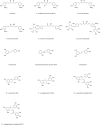
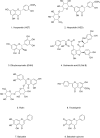
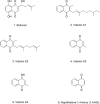

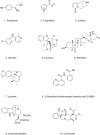
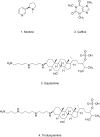
Similar articles
-
Review on the interactions between dopamine metabolites and α-Synuclein in causing Parkinson's disease.Neurochem Int. 2023 Jan;162:105461. doi: 10.1016/j.neuint.2022.105461. Epub 2022 Nov 30. Neurochem Int. 2023. PMID: 36460239 Review.
-
The misfolding mystery: α-synuclein and the pathogenesis of Parkinson's disease.Neurochem Int. 2024 Jul;177:105760. doi: 10.1016/j.neuint.2024.105760. Epub 2024 May 7. Neurochem Int. 2024. PMID: 38723900 Review.
-
α-Synuclein misfolding and aggregation: Implications in Parkinson's disease pathogenesis.Biochim Biophys Acta Proteins Proteom. 2019 Oct;1867(10):890-908. doi: 10.1016/j.bbapap.2019.03.001. Epub 2019 Mar 7. Biochim Biophys Acta Proteins Proteom. 2019. PMID: 30853581 Review.
-
ZPD-2, a Small Compound That Inhibits α-Synuclein Amyloid Aggregation and Its Seeded Polymerization.Front Mol Neurosci. 2019 Dec 17;12:306. doi: 10.3389/fnmol.2019.00306. eCollection 2019. Front Mol Neurosci. 2019. PMID: 31920537 Free PMC article.
-
The contribution of alpha synuclein to neuronal survival and function - Implications for Parkinson's disease.J Neurochem. 2016 May;137(3):331-59. doi: 10.1111/jnc.13570. Epub 2016 Mar 23. J Neurochem. 2016. PMID: 26852372 Free PMC article. Review.
Cited by
-
Therapeutic mechanistic study of novel indole derivatives as SIRTUIN3 modulators in Parkinson's disease with in vitro evaluation.Sci Rep. 2025 Apr 30;15(1):15196. doi: 10.1038/s41598-025-99534-3. Sci Rep. 2025. PMID: 40307324 Free PMC article.
References
-
- Aliakbari F., Mohammad-Beigi H., Abbasi S., Rezaei-Ghaleh N., Lermyte F., Parsafar S., et al. (2021). Multiple protective roles of nanoliposome-incorporated baicalein against alpha-synuclein aggregates. Adv. Funct. Mater. 31 (7), 2007765. 10.1002/adfm.202007765 - DOI
Publication types
LinkOut - more resources
Full Text Sources
Miscellaneous

